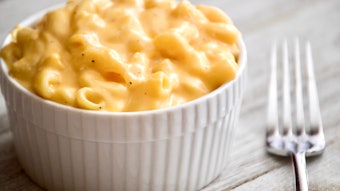From www.GCIMagazine.com
Menopause is a fact of life for every woman. It signals the end of the fertile phase of a woman’s life and affects the entire cascade of her reproductive functioning. This major physiological event usually has some effect on almost every aspect of a woman’s body—including her skin. The transition is more difficult for some than for others. Women generally begin to experience dryness and a loss of skin elasticity, due to the slowing of collagen production, but many women also experience symptoms of rosacea or acne.
There is a strong need for more consumer education on the effects of menopause on womens’ skin, particularly conditions such as rosacea and acne. Because there is some denial surrounding the subject, women around the globe have been slow to discuss and seek out information beyond their circle of friends. Historically, information was gleaned from close friends, a mother or an aunt, the occasional article or discussion that took place in a physician’s office or with a pharmacist. Increasingly, however, the topic is being covered in more mainstream media.
There are now more than 6,000 book titles that include the word menopause. For the modern woman, the Internet continues to be a key resource in helping increase her knowledge about menopause—with Web sites by organizations such as the North American Menopause Society (NAMS). These resources are creating ways for today’s women to experience and share their experiences of menopause in a vastly different way than their mothers did.
NAMS alone reports approximately five million hits each month on its Web site. More recently, consumer blogs and word-of-mouth have been gaining popularity as an objective platform for information and anonymous discussion. By the time a woman reaches the store, she oftentimes has a preconceived notion about what product she’ll buy.
Based on a global research study conducted by ACNielsen on consumer attitudes towards aging, women are quick to embrace the idea that 50 is the new 40. This may be one reason some women are in denial in recognizing that their skin conditions, particularly rosacea and acne, could be menopause-related. Some women think that their symptoms are genetic or a result of ill health and do not understand that this is part of the menopausal journey.
Once known as “the silent passage,” some women still refer to menopause as “the change” and avoid the word menopause altogether. This attitudinal behavior makes it challenging for skin care marketers to communicate and connect with this group. If women are hesitant to seek essential advice and treatment, what will resonate more with consumers—how and where a product’s benefits are communicated to them or its formulation/ingredients? And what is the key to encouraging women to try products and to purchase them again?
Research indicates that rosacea is most common in those whose ancestors originated in cooler parts of the globe (Northern or Eastern Europe, England, Scotland, Scandinavia), especially those who are blonde and fair-skinned. It is experienced less often in patients from Western Europe, Asia and those with darker skin, such as African-Americans. Several studies have shown that more than 50% of women around the globe wrongly believe they have sensitive skin, when in fact they may have multiple skin care conditions but don’t realize it. This could include menopausal-related rosacea and acne.
Acne is not as discriminating. Its wrath spans the globe. In the U.S., it is not uncommon to hear women complaining about having to quietly tiptoe into their teenagers’ rooms searching for acne medication. Comments such as, “Since when does getting older mean getting acne?” and “Shouldn’t I be over that by now?” are met with embarrassing nods by those who are experiencing the same condition. The menopausal acne variety is mostly on the lower face, particularly along the chin and neck. This is usually due to the shift in the balance between the hormones androgen and estrogen. Women who had acne during their teen years will often have acne in midlife, too. Adult acne often does not respond as effectively to teenage acne therapies, which translates into a huge opportunity for skin care companies to help women navigate product offerings targeted to their menopausal acne.
Products exist in the marketplace that are specifically addressing menopausal skin conditions, but very few actually include the terms menopausal or menopause. Do women seeking out skin care products for their menopausal conditions actually realize which products are for them? What is the most appropriate product name to use? Do they prefer that the ‘m’ word not be used on the packaging? Is the gentler “mature,” which is utilized in many product descriptors in the category, more appealing to them? Is the word “antiaging” enough to interest consumers? Will using the name rosacea on the packaging or in the brand title help or hinder the consumer to purchase?
Most brands do not include the word menopause in their product names but are said to address menopausal skin conditions in their communication hierarchy. Cle de Peau’s Essence is said to refresh skin affected by hormonal fluctuations. Another brand that addresses such skin conditions is MD Skincare by Dr. Dennis Gross.
Its full line of antiaging products specifically addresses acne and rosacea and notes that heavy metals can lead to such skin conditions. MD Skincare’s antiaging acne products deliver a variety of ingredients to limit or prevent breakouts while addressing collagen breakdown. In addition, the line uses chelators, an organic complex, to sequester heavy metals to prevent damage and collagen breakdown.
Similarly, Shiseidso’s Benefiance NutriPerfect Day and Night Creams were created specifically for women ages 50 and older who are facing menopause-related hormonal changes and who are concerned about the thinning of their skin. In addition, an antiaging cream for hormonal skin, Ren’s Sirtuin Phytohormone Replenishing Cream is formulated to prevent and treat the signs of aging due to hormonal changes in both pre- and post-menopausal women. It contains the latest bioactive technology, sirtuins. Culled from rice, sirtuins have the ability to activate the protein of cell longevity. Cells live longer and work more efficiently, which enhances the performance of other antiaging bioactives present. Olay Total Effects Mature Skin Therapy also assists menopausal/mature skin and creates visibly younger skin by providing the antiaging power of vitamins, antioxidants, soy and ginger. It is oil-free and noncomedogenic. One product that does include the word, menopause, in its title, B. Kamins Baby-Boomer Menopause Skin Cream, aids in cosmetically minimizing the symptoms that skin experiences before, during and after menopause. It acts as a reservoir to provide essential nutrients and moisture, compensating for excess water loss. The formula contains a combination of bio-maple compound, episphere-blue and profusion ceramide technologies, which cosmetically combat some skin changes. The result is a delicate formula that provides a soothing, cooling effect while helping to reduce the appearance of premature lines.
Women navigating product offerings in-store and online to combat rosacea will rarely encounter the term rosacea in the brand name or on the front of the packaging. Many brands use “redness” as the descriptor. One such product is Murad Redness Therapy. It claims to provide skin with agents that will help to calm and soothe current rosacea redness while helping to minimize future occurrences. It contains goji berries and 500 times the vitamin C of oranges to provide super protection and help heal inflamed skin by reducing free-radical damage.
Clinique’s Redness Solutions line addresses rosacea and is fragrance-free, oil-free and allergy-tested. DermaDoctor, on the other hand, includes the word rosacea on the front of its jar of Calm Cool and Corrected, which is said to aggressively, yet gently, and effectively target matters that plague rosacea-riddled skin such as blemishes, oiliness, redness, dryness or sensitivity, as it helps diminish the visible signs of aging. This radical, calming treatment rescues and renews even the most irritated skin.
Tapping into the skin care needs of menopausal women is vitally important, especially given that in 2009, the proportion of the global population aged 50 and older will exceed 30%. The unprecedented challenge and unique opportunity facing skin care manufacturers is how to reach out to and maximize the potential of the consumer aged 50 and above.
Communication between brands and consumers will need to be guided by sensitive, individualized approaches rather than by casting a net to all women over age 50.
Addressing the specific conditions of menopausal skin will further increase market fragmentation and shift even more mass marketing to mass customization. Targeting this fast-growing segment with multiple-benefit products that increase the value of antiaging skin care products by helping to address conditions of menopausal skin is a wise strategy; however, the strategy needs to be coupled with a nomenclature format that is considerate to personal and cultural sensitivities.










